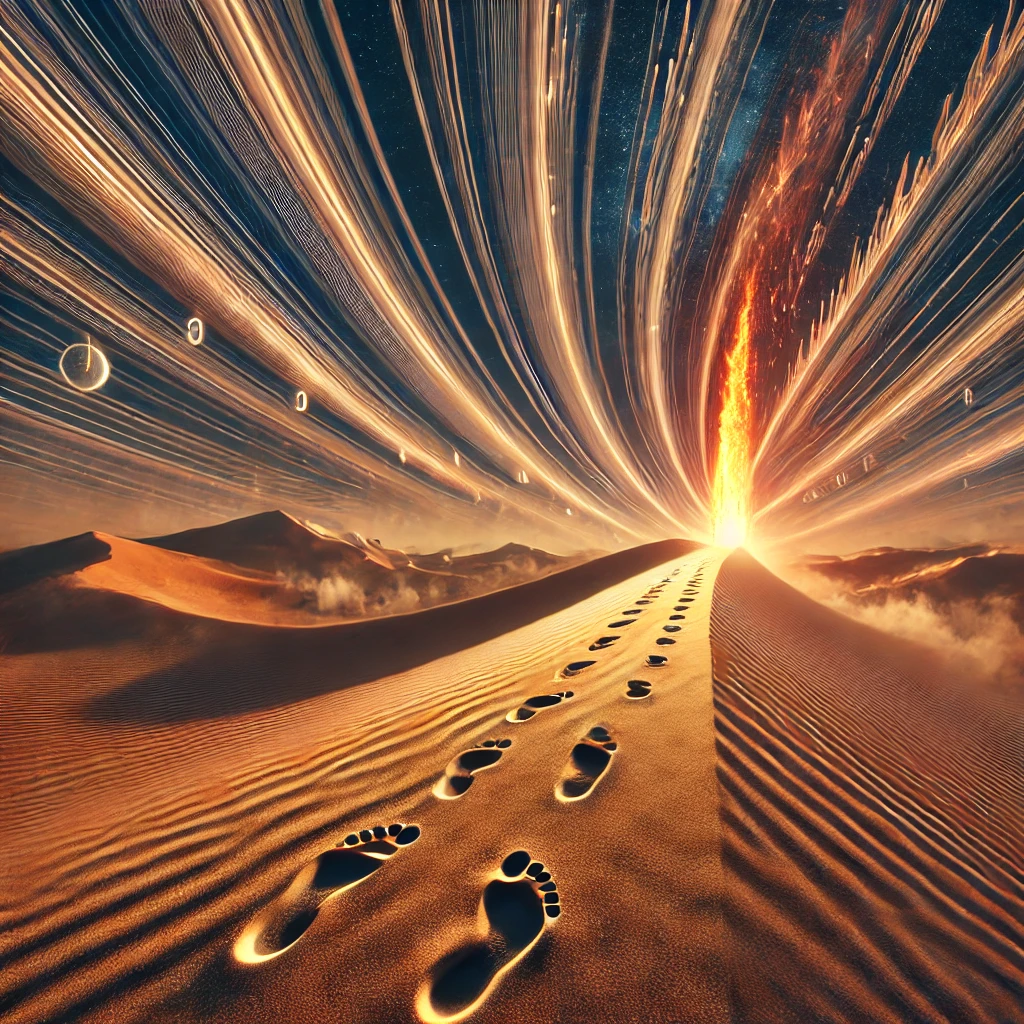“The past is never dead. It’s not even past.” — William Faulkner
What if causality, as we like to imagine it, is merely the shadow cast by consequence? We, the interpreters of temporal sequences, follow these trails of effect backward, like hunters of a quarry long gone, believing ourselves to have captured the elusive beast of cause. But perhaps the beast never existed—not as we perceive it. The effect, robust and demanding our attention, stands in the present, while the cause, ephemeral, remains a fading echo we reconstruct to satisfy our need for order.
In this, causality becomes less a linear chain than a psychological necessity, an after-the-fact assembly of fragments to justify the solidity of an outcome. We are like archaeologists mistaking the erosion of time for the design of nature, mapping the footprint of a vanished cause onto the ground of present evidence.
The Reverse Alchemy of Causation
Cause, stripped of its mystique, is nothing more than effect’s footprint on the sands of time. To assert that cause precedes effect is to mistake chronology for necessity. Indeed, might not the clarity with which we perceive an effect distort the very cause we imagine? The more defined the consequence, the more elaborately we fashion its progenitor.
Consider this: a fire burns down a forest. Investigators trace the fire to a spark—a faulty wire, a cigarette butt, an act of arson. Yet the magnitude of the fire demands more than such simplicity. We impute to the spark a potency it never possessed in isolation. We grant the cause its authority retrospectively, anointing it with the power to explain the effect.
The Machinery of Misperception
When we say, “X caused Y,” we do not merely link events; we assign blame, derive meaning, and establish a narrative. Yet, the very need for narrative belies the randomness inherent in what we observe. We reconstruct cause from effect in much the same way we imagine the universe as the product of intent rather than stochastic complexity. The cause, then, is the puppet of the effect, animated in hindsight, the way a ripple implies a stone though it may have been the wind.
We perceive the echo and mistake it for the original sound. But if the sound is shaped by the canyon it reverberates through, how much of what we call cause is merely the acoustic distortion of effect?
The Implications of Echoic Causality
This inversion strips us of the comfortable illusion of control, for if cause is constructed in hindsight, what we believe we are shaping now will only become “cause” through the lens of future outcomes. The scientist, the historian, the judge—they do not observe causes; they sculpt them out of evidence and context.
And here lies the irony: the machinery of our perception, tasked with navigating the world, blinds us to its own reverse engineering. We are the architects of causation, unaware that we live downstream from its origins.
